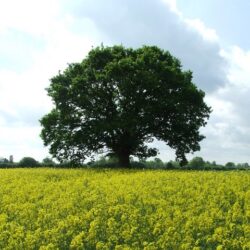Contributor(s): Shared on: 24 June 2022 under the Creative Commons Zero (CC 0) Universal license a Public Domain dedication Categories: Tags: | Source (Hebrew) | Adaptation (English) |
|---|
|
Sabbath Princess |
לְכָה דוֹדִי לִקְרַאת כַּלָּה
פְּנֵי שַׁבָּת נְקַבְּלָה. |
O come beloved, to meet the bride,
The Sabbath Princess to receive. |
לִקְרַאת שַׁבָּת לְכוּ וְנֵלְכָה
כִּי הִיא מְקוֹר הַבְּרָכָה
מֵרֹאשׁ מִקֶּדֶם נְסוּכָה
סוֹף מַעֲשֶׂה בְּמַחֲשָׁבָה תְּחִלָּה.
לְכָה דוֹדִי לִקְרַאת כַּלָּה
פְּנֵי שַׁבָּת נְקַבְּלָה. |
Come let us greet the Sabbath day,
Perennial fount of blessings rare.
Her grace, our homes shall sanctify,
Her sweetness fill our hearts with prayer.
O come beloved, to meet the bride,
The Sabbath Princess to receive. |
הִתְנַעֲרִי מֵעָפָר קוּמִי
לִבְשִׁי בִּגְדֵי תִפְאַרְתֵּךְ עַמִּי
עַל יַד בֶּן יִשַׁי בֵּית הַלַּחְמִי
קָרְבָה אֶל נַפְשִׁי גְאָלָהּ.
לְכָה דוֹדִי לִקְרַאת כַּלָּה
פְּנֵי שַׁבָּת נְקַבְּלָה. |
Awake, arise, and utter song!
Shake off the dust of daily care.
Adorn thyself in beauty’s robe;
To weary hearts, sweet rest declare.
O come beloved, to meet the bride,
The Sabbath Princess to receive. |
בּוֹאִי בְּשָׁלוֹם עֲטֶרֶת בַּעֲלָהּ
וְגַם בְּשִׁמְחָה וּבְצָהֳלָה
תּוֹךְ אֱמוּנֵי עַם סְגוּלָה
בּוֹאִי כַּלָּה בּוֹאִי כַּלָּה.
לְכָה דוֹדִי לִקְרַאת כַּלָּה
פְּנֵי שַׁבָּת נְקַבְּלָה. |
Crown of thy husband, come in peace!
Midst Israel’s faithful homes abide.
With joy, with mirth, we greet thee, love,
O enter Sabbath, Israel’s bride.
O come beloved, to meet the bride,
The Sabbath Princess to receive. |
These three stanzas of the piyyut l’Khah Dodi by Shlomo haLevi al-Qabets were adapted into English by Angie Irma Cohon and published in her תפלת ישראל (Tefilat Yisrael) A Brief Jewish Ritual (Women of Miẓpah 1921), p.16. Source(s)
 Angie Irma Cohon (née Reinhart, 1890-1991) was a Jewish author, poet, translator, and educator. Born to parents J.F. and Amelia (Marks) Reinhart in 1890, Cohon lived in Portland, Oregon until moving to Ohio at 19 to attend Hebrew Union College. She transferred to the University of Cincinnati, earning a bachelors degree in 1912. On June 12 of the same year she graduated, Cohon married Rabbi Samuel S. Cohon. In Chicago, they ran Temple Mizpah, with A. Irma Cohon organizing the sisterhood (Women of Mizpah) and the synagogue's religious school. A prayer pamphlet she prepared, A Brief Jewish Ritual, was published by Women of Mizpah in 1921. Cohon is best known for her contributions to the field of Jewish music in the English language. The National Council on Jewish Women published Introduction to Jewish Music in Eight Illustrated Lectures, with a second edition coming out in 1923. This work became a basis for the Council's study of music for nearly 30 years. She collaborated with Abraham Zevi Idelsohn on Harvest Festivals, A Children’s Succoth Celebration (1925).  Shlomo haLevi Al-Qabets (Hebrew: שלמה אלקבץ, also, al-kabetz, Alqabitz, Alqabes; ca. 1500 – 1576) was a rabbi, kabbalist and poet perhaps best known for his composition of the song Lekha Dodi. Alkabetz studied Torah under Rabbi Yosef Taitatzak. In 1529, he married the daughter of Yitzhak Cohen, a wealthy householder living in Salonica. Alkabetz gave his father-in-law a copy of his newly completed work Manot ha-Levi. He settled in Adrianople where he wrote Beit Hashem, Avotot Ahava, Ayelet Ahavim and Brit HaLevi. This latter work he dedicated to his admirers in Adrianople. His students included Rabbi Shmuel Ozida, author of Midrash Shmuel on Avot, and Rabbi Avraham Galante, author of Yareach Yakar on Zohar. His circle included Moshe Alsheich and Yosef Karo, as well as his famous brother-in-law Moshe Cordovero. Following the Tiqūn Leil Shavuot, Rabbi Shlomo and Rabbi Joseph Karo stayed awake all that night learning and during the recitation of the required texts, Rabbi Karo had a mystical experience: The Shekhinah appeared as a maggid, praising the circle and telling them to move to the Land of Israel. When they stayed up again the second night of Shavuot, the Shekhinah was adamant about their moving to the land of Israel. The account was recorded by Al-Qabets. He settled in Safed in 1535. His works written in Adrianople center on the holiness of the people Israel, the Land of Israel, and the specialness of the mitsvot. Al-Qabets accepts the tradition that Esther was married to Mordekhai before being taken to the king's palace and becoming queen, and even continued her relationship with Mordekhai after taking up her royal post. The view of midrash articulated by Al-Qabets and other members of the school of Joseph Taitatsak represents an extension of the view of the authority of the oral law and halakhic midrash to aggadic midrash and thus leads to the sanctification and near canonization of aggadic expansions of biblical narrative. Aharon Varady (M.A.J.Ed./JTSA Davidson) is a volunteer transcriber for the Open Siddur Project. If you find any mistakes in his transcriptions, please let him know. Shgiyot mi yavin; Ministarot naqeni שְׁגִיאוֹת מִי־יָבִין; מִנִּסְתָּרוֹת נַקֵּנִי "Who can know all one's flaws? From hidden errors, correct me" (Psalms 19:13). If you'd like to directly support his work, please consider donating via his Patreon account. (Varady also translates prayers and contributes his own original work besides serving as the primary shammes of the Open Siddur Project and its website, opensiddur.org.) Read a comment / Leave a comment (moderated) Works of related interest: |












Leave a Reply